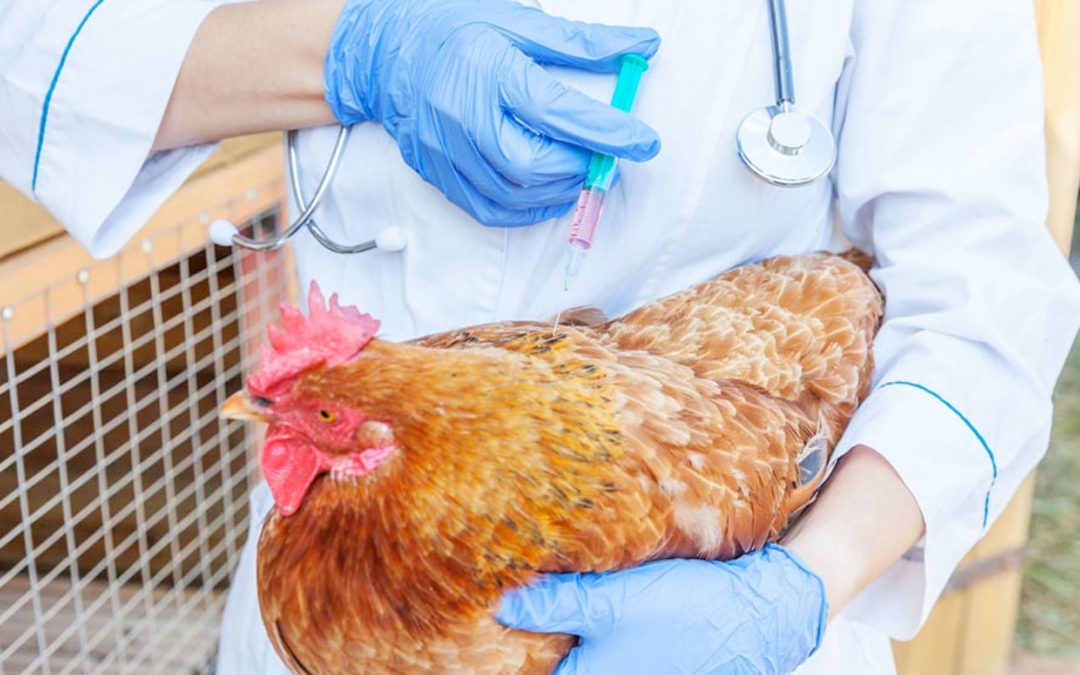With millions of commercially raised birds affected by avian influenza on thousands of premises in major poultry-producing nations, the call for vaccination is getting louder. So much so that the IEC and IPC drafted a joint statement to convince the industry, international organisations and governments to allow vaccination while mitigating the risk of trade barriers.
Since early spring 2022, more and more alarm bells have started to ring as the poultry sector and beyond realised that the avian influenza virus wasn’t behaving as expected. Of course, the devastating disease is not new – it’s an unfortunate annually reccurring event. “We had already seen a change in disease patterns over the last couple of years,” says veterinary epidemiologist, Professor Arjan Stegeman.
As a member of the International Egg Commission (IEC) global expert group on avian influenza, Stegeman saw the disease evolve from a very rare event until 2004 into an annual event since 2014. “Normally the virus would peak in December and then slowly fade out. This year that didn’t happen and the virus remained present year round, even during summer when we expected it to die off under the dry and warm conditions.”
His findings are corroborated by the European Food Safety Authority (EFSA). The European Centre for Disease Prevention and Control, and the EU Reference Laboratories reported an unprecedented number of highly pathogenic avian influenza (HPAI) virus variants detected in wild and domestic birds from June to September in Europe. In previous years, no cases, or just a few, were confirmed during the summer period. The overall 2021-2022 HPAI season has produced the largest epidemic so far seen in Europe.
EFSA recommends the rapid implementation of suitable and sustainable HPAI mitigation strategies, including appropriate biosecurity measures and surveillance strategies for early detection. Medium to long-term prevention strategies should be considered in densely populated areas and in poultry production systems highly susceptible to avian influenza exposure.
“With the virus omnipresent in wild birds, leading to single introductions in commercial operations time and time again, the current ‘stamping out’ strategy does not eliminate the virus anymore. If we do not change how we confront this disease, the poultry industry is in serious danger,” notes Stegeman.
Vaccination against avian influenza
Getting the virus under control is necessary for multiple reasons. Most pressing for the poultry industry itself is the limitation of direct damage caused by the disease, for business continuity and – no less important – for the support of governments that pick up part of the tab by compensating for the direct and indirect costs of the culling measures.
“But there is more to it than that,” says Ben Dellaert, chair of the avian influenza expert group of the IEC. “In the current situation, outdoor farming becomes next to impossible from a disease perspective. At the same time, our industry knows that our licence to produce – our consumer acceptance – demands the use of alternative housing systems. But with avian influenza we find ourselves in dire straits. It will become increasingly difficult to explain to consumers that we produce valuable animal protein at the expense of millions of birds dying of a disease. This demands new solutions.”
As with many poultry diseases, Newcastle disease to name but one, vaccination is the most obvious tool to combat avian influenza. And that is exactly what Dellaert’s avian influenza expert group is working on. “We want to make vaccination possible and acceptable. For that we have drafted a joint position held by both the International Egg Commission and the International Poultry Council, asking international animal health bodies and all our member nations to convince the national chief veterinary officers to endorse vaccination.”
As Dellaert notes, there are multiple hurdles before vaccination can be implemented. “Of course there are technical questions. Which vaccine for which virus strains? Can we differentiate between vaccinated and infected birds? What guidelines should our avian influenza surveillance programme give? That said, technical issues can be overcome as lots of research is ongoing (see box). The real challenge that has to be overcome before we can move forward is trade restrictions. If vaccination leads to trade restrictions, it will be difficult to implement a new avian influenza strategy for exporting countries.”
Vaccination is too valuable a tool not to use. “And even if we don’t have a perfect vaccine, it can still be valuable. Over the years, various animal diseases have been controlled by imperfect vaccines. Newcastle disease, foot and mouth disease, and Aujeszky’s disease are all good examples of that.”
Font: https://www.poultryworld.net/health-nutrition/health/avian-influenza-unspeakable-damage-and-unexplainable-consequences/
Article of: Fabian Brockotter Editor in Chief, Poultry World

